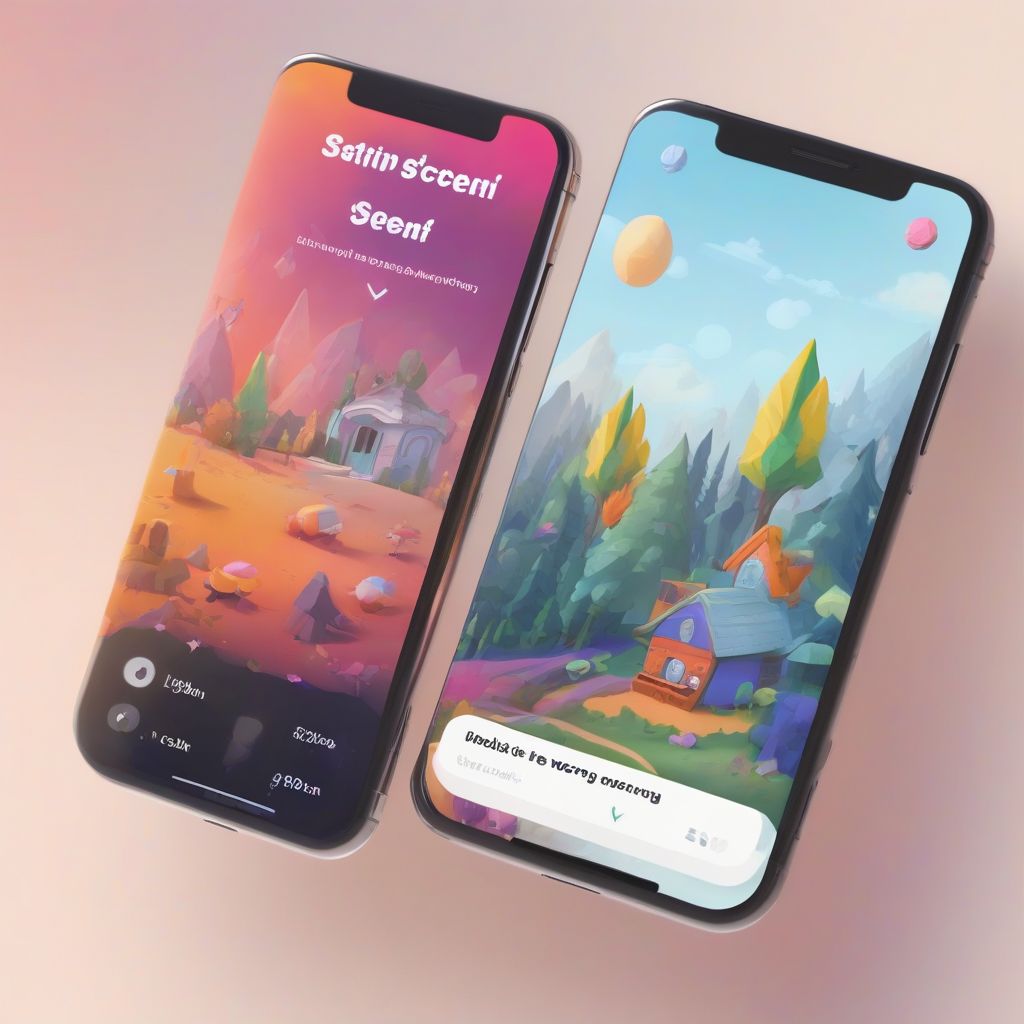Remember the last time you used a mobile app that felt clunky and lifeless? You probably don’t, because you likely abandoned it in frustration. Now, think about your favorite apps – the ones you keep coming back to. Chances are, they are visually appealing, intuitive, and, most importantly, engaging. This is the power of animation in app design. It’s not just about adding flashy visuals; it’s about crafting meaningful interactions that elevate the user experience.
From Static Screens to Dynamic Interfaces: Why Animation Matters
In the early days of mobile apps, static screens were the norm. But as technology evolved, so did user expectations. Today, users crave digital experiences that are as dynamic and engaging as the real world. This is where animation comes in, breathing life into static interfaces and transforming how users interact with apps.
Enhancing User Engagement and Interactivity
Animation injects a sense of vitality and responsiveness into mobile apps. By providing visual feedback to user actions, animations make the experience more intuitive and satisfying.
Imagine pressing a button and watching it subtly change color, acknowledging your touch. Or witnessing a smooth transition as you navigate between different sections of the app, guiding your journey. These subtle cues enhance the sense of control and provide a feeling of accomplishment with every interaction.
Telling a Story and Evoking Emotions
Just like in movies, animation in app design can be used to tell compelling stories and evoke emotions. It can set the tone, build anticipation, and create a memorable experience for the user.
Consider the use of playful animations in a language-learning app to celebrate correct answers and encourage progress. Or the subtle use of motion graphics in a meditation app to create a calming and serene environment. These well-crafted animations can turn a simple app into an immersive and enjoyable experience.
The Art of Subtlety: Types of Animations in App Design
From micro-interactions to full-screen transitions, there’s a wide spectrum of animations that can be used in app design. The key is to use them strategically and avoid overwhelming the user.
Functional Animation: Guiding the User Journey
As the name suggests, functional animations serve a specific purpose. They guide users through the app, provide feedback on their actions, and help them understand the app’s functionality.
Examples include:
- Loading animations: These keep users engaged while waiting for content to load, preventing frustration and app abandonment.
- Progress bars: These visually represent the status of a task, like downloading a file or uploading a photo.
- Navigation transitions: Smooth transitions between screens, like swiping or fading, help users understand the app’s structure and flow.
These animations, while subtle, play a crucial role in making the app feel intuitive and user-friendly.
Delightful Animation: Adding the “Wow” Factor
Delightful animations, on the other hand, are all about adding those extra touches of personality and charm. They may not be essential for the app’s functionality, but they elevate the overall experience and leave a lasting impression on the user.
Examples include:
- Micro-interactions: These are small, subtle animations that add life to static elements, like a button that bounces when tapped or a heart icon that fills with color when liked. You can learn more about the significance of micro-interactions in our article: The Role of Micro-interactions in Mobile App UX.
- Brand-specific animations: These animations reflect the app’s brand personality and create a memorable experience. For example, a weather app might use animated clouds and sunshine to display the forecast, while a music app could incorporate rhythmic animations synced to the beat of the music.
Striking the Right Balance: When Less is More
While animation can significantly enhance the user experience, it’s crucial to use it judiciously. Too much animation can be distracting, overwhelming, and even slow down the app’s performance. The goal is to find the right balance between functionality and delight, ensuring that animations enhance rather than detract from the user experience.
 Animation in Mobile App Design
Animation in Mobile App Design
The Future of App Design: Animation Takes Center Stage
As mobile technology continues to evolve, we can expect animation to play an even more prominent role in app design. With the rise of augmented reality (AR) and virtual reality (VR), designers have new tools to create truly immersive and engaging experiences.
Moreover, the increasing focus on personalization and accessibility means that animations will need to be carefully considered for different user preferences and needs.
For instance, designers need to ensure that animations are adjustable for users with motion sensitivities and comply with accessibility guidelines. By prioritizing inclusivity, app designers can ensure that the benefits of animation are accessible to everyone.
Conclusion: Animating a Brighter Future for App Design
Animation is no longer a decorative afterthought in app design; it’s an essential element that shapes user experience. By understanding the different types of animation and their impact, designers can create apps that are not only visually appealing but also intuitive, engaging, and truly delightful to use.
As we move towards a future where digital experiences are becoming increasingly integrated into our lives, the role of animation in bridging the gap between the physical and digital worlds will only continue to grow.
What are your thoughts on the role of animation in app design? Share your experiences and insights in the comments below! If you’re interested in exploring the evolution of mobile app design, check out our article on The Evolution of Mobile App Design Trends.
[amazon bestseller=”UI animation”]
